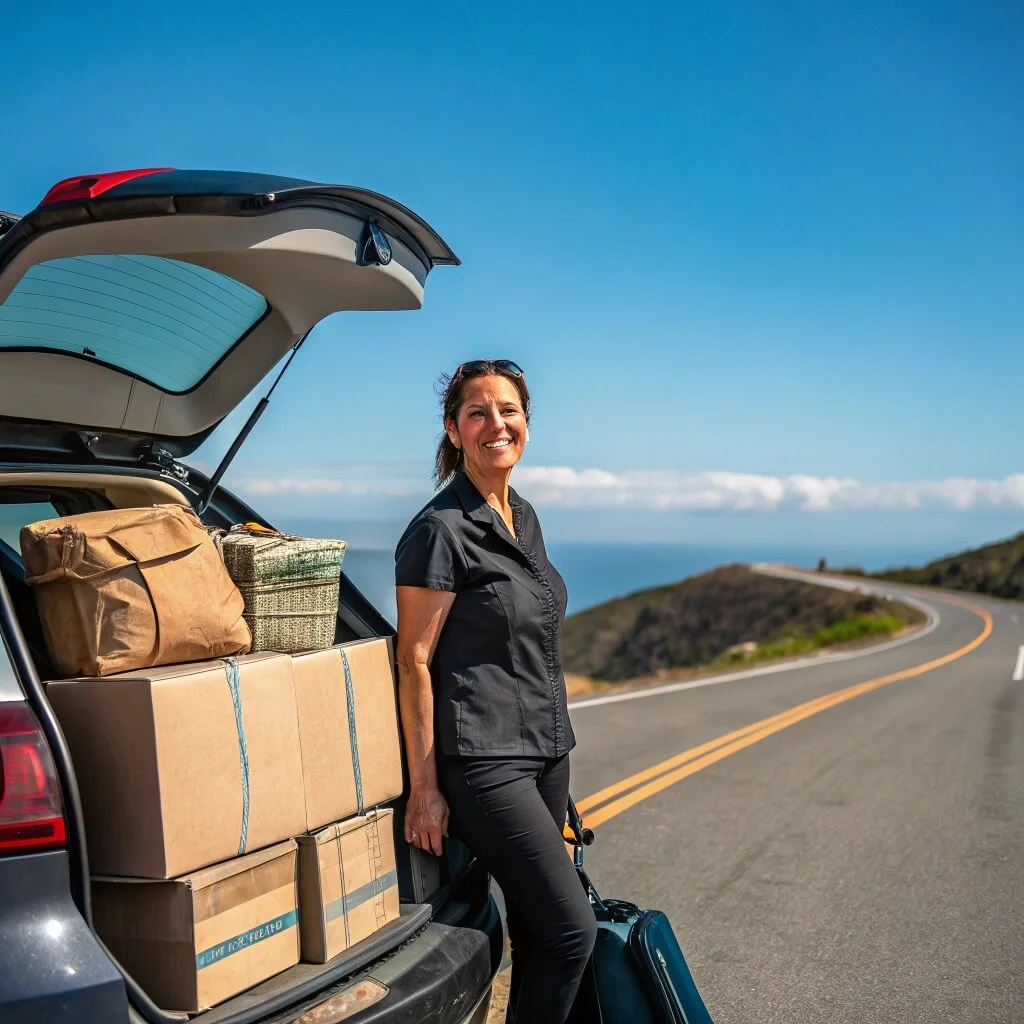
Rena Monrovia When You Transport Something by Car
Rena Monrovia when you transport something by car is a concept that encompasses not just the physical act of moving items but also the planning, safety, legal, and economic aspects of doing so efficiently. Whether you’re relocating household items, making urgent deliveries, or managing small business logistics, using a car can be one of the most practical solutions for short to medium-range transportation.
In this comprehensive guide, we explore in-depth strategies and considerations that Rena Monrovia recommends for anyone transporting goods by car. From choosing the right vehicle and securing cargo to understanding costs and handling emergencies, you’ll get everything you need to ensure smooth and successful car-based transport.
Introduction to Rena Monrovia When You Transport Something by Car
Rena Monrovia when you transport something by car emphasizes the importance of thorough planning, proper equipment, and situational awareness. Transporting goods by car is a common practice, from personal relocations to small business deliveries. With growing e-commerce demands and cost-sensitive consumers, efficient car transport has never been more essential.
Benefits of Transporting Goods by Car
There are numerous advantages to choosing a car over larger transport vehicles:
- Flexibility: Cars allow on-demand shipping, ideal for urgent or unexpected deliveries.
- Cost-efficiency: For smaller loads, a car is far more economical than renting a truck.
- Route Control: You can choose the fastest or safest path, avoiding traffic or road issues.
- Personal Handling: Delicate or sensitive items receive more attentive care.
According to rena monrovia when you transport something by car, these benefits make cars ideal for both personal and business needs.
Planning the Transport: The Rena Monrovia Way
Before you load the car, Rena Monrovia emphasizes the importance of meticulous planning. Transport begins long before the engine starts.
Assess Your Cargo
- Are your items fragile, bulky, or hazardous?
- Do they need temperature control, special packaging, or extra security?
Understanding the nature of your goods ensures appropriate packaging and handling.
Choose the Right Vehicle
Use a compact car for personal belongings or light packages. For furniture or appliances, a van or SUV may be better. As per rena monrovia when you transport something by car, always match the load with your car’s capacity.
Map Your Route
Use GPS and traffic apps but also keep a physical map. Check for:
- Construction zones
- Tolls
- Weight restrictions
- Weather alerts
Packaging and Labeling Essentials
Correct packaging isn’t just about protection—it’s about smart logistics.
Use Appropriate Materials
- Bubble wrap, foam, or cushioned boxes for fragile items
- Plastic wrap, duffel bags, and straps for heavier items
- Waterproof labels marked with “Fragile” or “This Side Up”
This ensures that items remain intact during transport.
Label Everything Clearly
Use permanent, waterproof markers to prevent fading or smudging. Labels should be visible and easy to read.
How to Load and Secure Cargo Correctly
Rena Monrovia when you transport something by car insists that a poor loading strategy leads to instability, inefficiency, and even danger.
Step-by-Step Loading
- Load heaviest items first, placing them against the seat backs or trunk floor.
- Distribute weight evenly—unbalanced loads affect vehicle handling.
- Use ratchet straps or bungee cords to prevent shifting.
- Check that nothing obstructs your mirrors or lights.
Check the load periodically, especially on longer journeys or bumpy roads.
Safety Guidelines and Legal Considerations
Vehicle Weight Limits
Always consult your car’s manufacturer manual for maximum payload capacity. Overloading reduces braking ability, increases tire wear, and can lead to accidents.
Legal Requirements
Depending on your cargo:
- Permits may be required
- Hazardous goods must follow strict regulations
- Cargo insurance may be legally or contractually required
As Rena Monrovia states, ignorance of transport laws can have legal and financial consequences.
Managing Car Transportation Costs
Understanding the financial side of transport is vital. The phrase “rena monrovia when you transport something by car” is as much about economics as logistics.
Common Cost Factors
- Fuel: Influenced by car type, fuel prices, and driving style
- Maintenance: Regular servicing keeps costs down and prevents breakdowns
- Insurance: Needed for both the vehicle and cargo
- Tolls & Parking: Add up over longer routes
- Permits: Required for certain goods or areas
Tips for Efficient Fuel and Route Planning
To reduce costs and environmental impact:
- Plan routes during off-peak hours
- Avoid high-traffic zones
- Use apps like Google Maps or Waze
- Monitor fuel consumption with trip calculators
- Consolidate multiple deliveries into one trip
Preventing Damage from Weather and Road Conditions
Environmental Hazards
- Rain and Snow: Use waterproof covers or sealed containers
- Extreme Heat: Avoid leaving sensitive items in the car
- Cold: Protect electronics or liquids from freezing
Road Conditions
Avoid pothole-heavy areas and steep inclines. Bad roads can damage both the car and cargo.
Emergency Preparedness: Always Be Ready
No matter how careful you are, issues can arise.
Must-Have Emergency Items
- Toolkit
- Spare tire
- Flashlight
- First-aid kit
- Power bank for phone
- Emergency contact list
Rena Monrovia when you transport something by car always prepares for the unexpected.
Human Element: Communication and Teamwork
When transporting with others:
- Clarify roles and responsibilities
- Share driving if possible
- Take regular breaks to avoid fatigue
- Keep communication lines open
Team coordination ensures a smoother and safer trip.
Frequently Asked Questions (FAQs)
What is the first step when transporting something by car?
Assess your cargo’s size, weight, and fragility to plan the vehicle and route.
Can any car be used for transporting goods?
No. Choose a vehicle based on cargo size, weight, and safety requirements.
How can I reduce the cost of transportation?
Use fuel-efficient routes, maintain your car regularly, and avoid toll roads when possible.
Is insurance necessary for personal transport?
While not always required, insurance is highly recommended to protect against loss or damage.
What is the biggest mistake people make when loading a car?
Improper weight distribution, which affects vehicle control and safety.
Should I use straps even for short trips?
Yes, even short movements can shift cargo and cause damage.
Can weather affect car-based transport?
Absolutely. Use waterproof materials and avoid temperature-sensitive exposure.
How do I know if I’m overloading my vehicle?
Check your vehicle’s Gross Vehicle Weight Rating (GVWR) in the manual.
What’s the best way to deal with traffic?
Plan your journey during non-peak hours and use real-time traffic apps.
Is it okay to transport hazardous goods by car?
Only if you follow all legal and safety guidelines, including labeling and isolation.
Conclusion
Incorporating the principles of rena monrovia when you transport something by car ensures a process that is secure, cost-effective, and efficient. Transporting items via car may seem simple, but doing it right involves planning, proper execution, and flexibility. From understanding your cargo and choosing the right vehicle to preparing for emergencies and managing costs, each step matters.
Whether you’re a business owner handling logistics or an individual moving household items, following Rena Monrovia’s expert insights will make your transport smooth and successful. The key lies in preparation, awareness, and adaptability—three pillars that Rena emphasizes repeatedly.
With this guide, you’re now equipped to handle car transportation like a pro.
